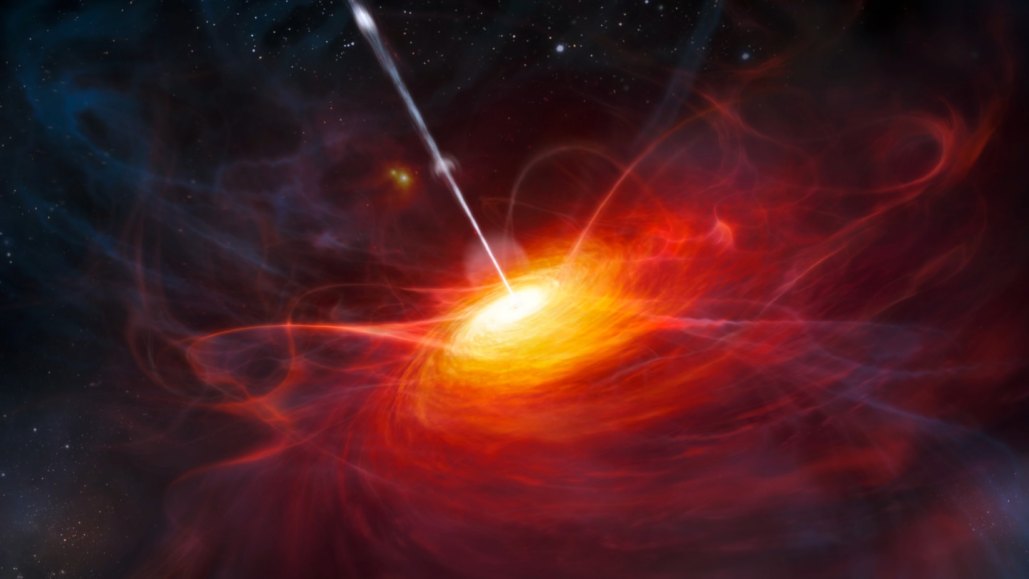A distant quasar’s black hole is oddly huge for its galaxy
The black hole powering the quasar has a record mass relative to the stars of the host galaxy

The 1.4-billion-solar-mass black hole powering a remote quasar named ULAS J1120+0641 (illustrated) in the constellation Leo is half as massive as the stars in the surrounding galaxy, a ratio greater than that seen in any other quasar host galaxy.
M. Kornmesser/ESO